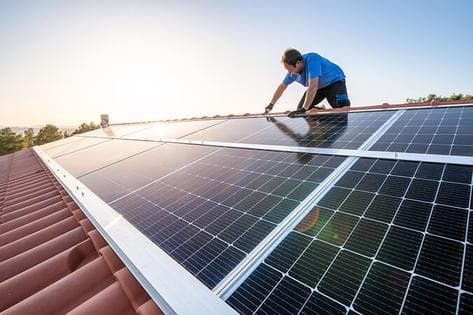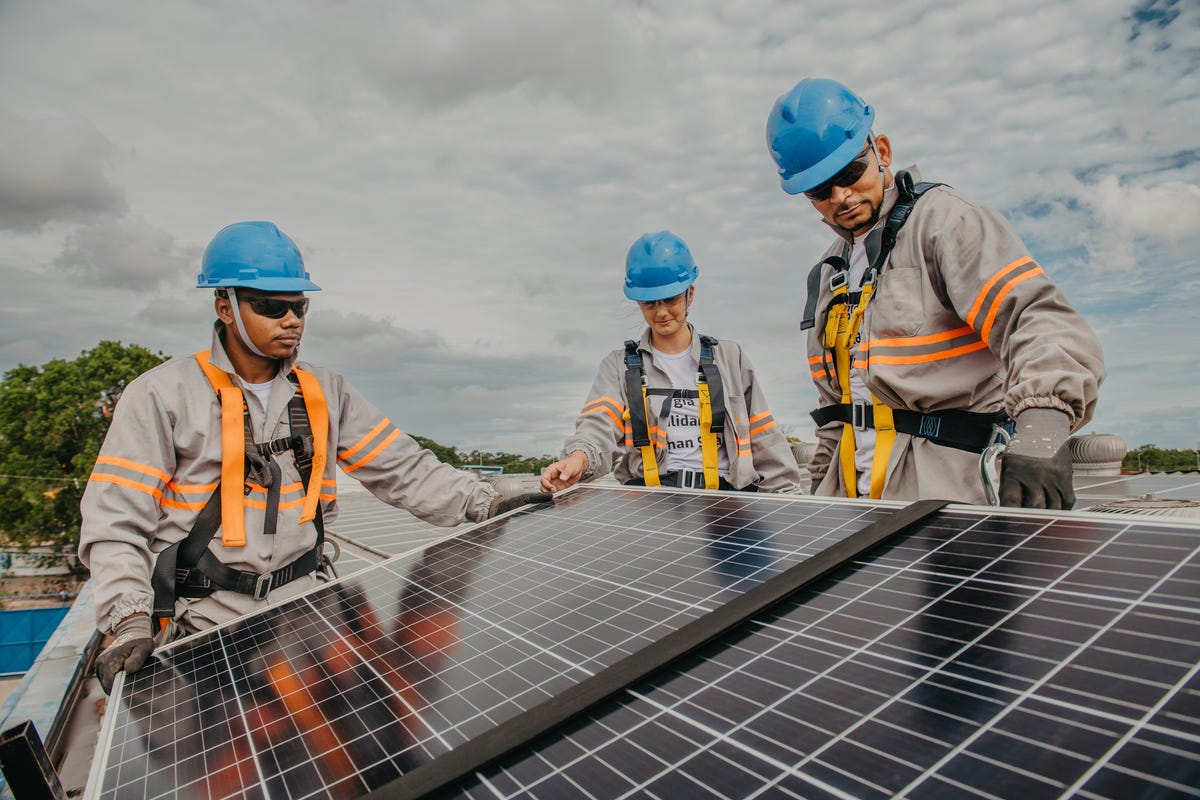Solar Panel Maintenance Virginia: Lumina Solar Focuses On Supplying Advanced Photovoltaic Solutions For Residences And Services
History and Founding
Have you ever questioned how a photovoltaic panel company springs from a simple spark of motivation into a powerhouse of renewable resource? It frequently begins with a vision-- one fueled by a mix of innovation, decision, and a pinch of serendipity. The journey of many solar business mirrors the evolution of the innovation itself: from bulky, inefficient panels to smooth, high-efficiency marvels harnessing the sun's bounty.
The Early Days
In the late 20th century, when solar energy was still a niche concept, pioneers planted seeds for what would end up being a global motion. Think of a little workshop filled with curious engineers, tirelessly explore photovoltaic cells. Their enthusiasm was palpable, typically driven by a desire to combat environment modification and decrease dependence on nonrenewable fuel sources.
One such anecdote is about a founder who, influenced by an outdoor camping trip, realized that even in remote locations, the sun could power important devices. This simple observation stimulated a business's objective to equalize access to tidy energy.
Founding Principles

- Development: Constantly pressing the borders of solar technology to improve efficiency and durability.
- Sustainability: Dedicating to environmentally friendly production and reducing carbon footprints.
- Availability: Making sustainable energy solutions inexpensive and useful for daily users.
Milestones in Growth
| Year | Key Event |
|---|---|
| 1985 | Company established in a little garage, focusing on research and advancement. |
| 1995 | Industrial solar panel item introduced, getting local attention. |
| 2005 | Broadened to worldwide markets, welcoming worldwide renewable resource goals. |
| 2015 | Presented advanced photovoltaic panel innovation with improved energy conversion. |
Isn't it interesting how these incremental actions, frequently overlooked, shape the energy landscape today? The photovoltaic panel business story is not just about innovation; it's about a relentless mission for a brighter, cleaner future.

Innovations in Photovoltaic Panel Technologies
Ever seen how some solar panels shine brighter and last longer? It's not magic; it's the science of photovoltaic efficiency. Modern website solar panel business invest heavily in innovations like bifacial cells, which record sunshine from both sides, enhancing energy harvest without broadening roof area. Have you ever questioned why some panels carry out much better on cloudy days? That's due to advances in thin-film solar innovation, which thrives under diffused light conditions.
Product Variations Tailored to Unique Requirements
One size never fits all. Photovoltaic panel suppliers now provide:
- Monocrystalline panels for maximum effectiveness and streamlined aesthetics, ideal for space-constrained roofs.
- Polycrystalline panels, which use a cost-effective option without compromising too much output.
- Building-integrated photovoltaics (BIPV), merging solar tech seamlessly into architectural elements like windows and facades.
Picking the best product isn't practically upfront expense; it's about matching your environment, energy goals, and long-lasting cost savings. For instance, homes shaded by trees need panels that master low-light scenarios, something numerous overlook up until energy expenses climb up suddenly.
Technical Tips for Optimum Selection
- Evaluate the temperature coefficient-- lower values mean panels lose less performance on hot days.
- Look for panels with enhanced anti-reflective finishes to maximize light absorption.
- Consider the panel's service warranty not just for flaws, however for guaranteed power output over decades.
- Do not undervalue the value of the inverter technology paired with the panels; it can make or break your system's efficiency.
Beyond Panels: Emerging Trends
Picture photovoltaic panels that change their angle immediately to chase the sun-- tracking systems are becoming more accessible, increasing yield substantially. Or solar tiles that blend undetectably into your roofline, changing your home into a quiet, self-sufficient power generator. These innovations are reshaping what a photovoltaic panel business provides-- not just items, but integrated energy solutions.
Market Presence and Global Operations
Ever wonder why some solar panel companies seem to sprout up in every corner of the world while others barely make a ripple? The distinction lies not simply in technology but in mastering the art of browsing varied markets. Broadening worldwide resembles planting seeds in different climates-- you must understand each environment's distinct conditions to flourish.
Take, for example, the intricate dance of logistics and supply chain management. Shipping panels midway across the world isn't simply about distance; it has to do with timing, customizeds, tariffs, and adapting to regional need variations. A company with robust global operations prepares for these variables, guaranteeing panels show up on schedule without pumping up costs. This foresight is no little feat and often separates market leaders from fans.
Key Techniques for Expanding Market Presence
- Localized manufacturing: Developing production hubs near target audience minimizes shipping delays and import complexities.
- Strategic partnerships: Collaborating with regional companies accelerates market penetration and develops trust.
- Adaptive product style: Customizing solar panel tech to weather, sun intensity, and infrastructure subtleties boosts performance and acceptance.
What about the human element? Solar panel companies running globally should fix up cultural differences and regulatory subtleties without losing sight of their core mission. For instance, what operate in a sun-drenched desert might fail in a humid coastal region. Often, the most innovative option is merely listening-- absorbing local insights to fine-tune innovation and method.
Professionals often advise a phased rollout instead of a shotgun expansion. Why risk overextension when measured growth builds sustainable momentum? Scaling carefully implies balancing aspiration with operational resilience - Residential Solar Panels Virginia. After all, in the race for sustainable energy supremacy, perseverance can be as important as speed
Environmental Impact and Sustainability Practices
When solar panels initially emerged, numerous assumed they carried zero environmental luggage. The truth is more nuanced. The production of photovoltaic cells involves uncommon earth metals and energy-intensive processes, which can leave a large carbon footprint before the panels even reach roofs. The real ecological cost depends greatly on the sustainability practices used by the photovoltaic panel company throughout the lifecycle of their items.
How frequently do we stop briefly to consider what occurs to solar panels at the end of their useful life? Unlike batteries or electronics, photovoltaic panels can last 25-30 years, however disposal and recycling pathways remain underdeveloped in numerous regions. A business devoted to minimizing ecological harm will have a robust strategy for recycling photovoltaic products, restoring valuable silicon, glass, and metals to prevent garbage dump accumulation.
Secret Sustainability Methods
- Utilizing low-impact manufacturing methods that lessen water and energy consumption.
- Carrying out closed-loop systems to recycle production waste back into new panels.
- Participating in transparent supply chain audits to guarantee ethical sourcing of basic materials.
- Designing panels for much easier disassembly to help future recycling efforts.
It deserves keeping in mind that some solar companies have actually pioneered innovative methods, such as integrating naturally degradable components or utilizing less harmful chemicals throughout fabrication. This not just lowers ecological stress but also sets a precedent for the market. The question stays: can the solar industry really pivot towards a circular economy model without compromising efficiency or cost?
Specialist Tips for Evaluating Sustainability
- Inquire about the company's commitment to carbon-neutral manufacturing and whether they balance out emissions.
- Investigate if they partner with certified recycling centers committed to photovoltaic panel waste.
- Search for transparency reports detailing ecological effects and sustainability goals.
- Think about the longevity and guarantee of panels as an indirect measure of resource efficiency.
In the end, opting for solar power ought to suggest more than simply slashing electrical energy costs; it's about nurturing a future where energy is harvested responsibly and waste is thoughtfully managed. Solar panel business that accept this approach not only illuminate homes however also cast a brighter light on sustainable innovation.
Comments on “Solar Companies In Virginia Fundamentals Explained”